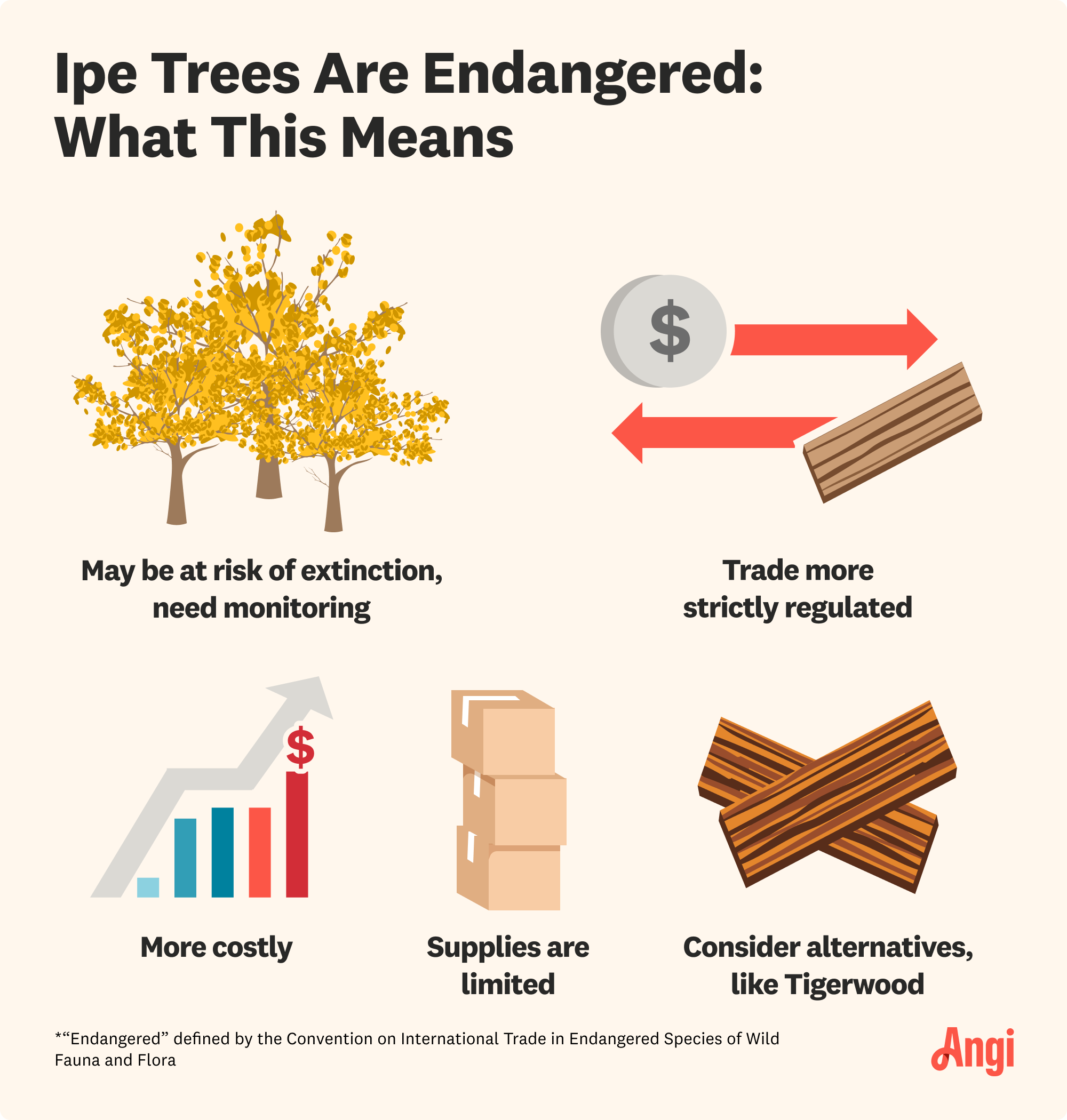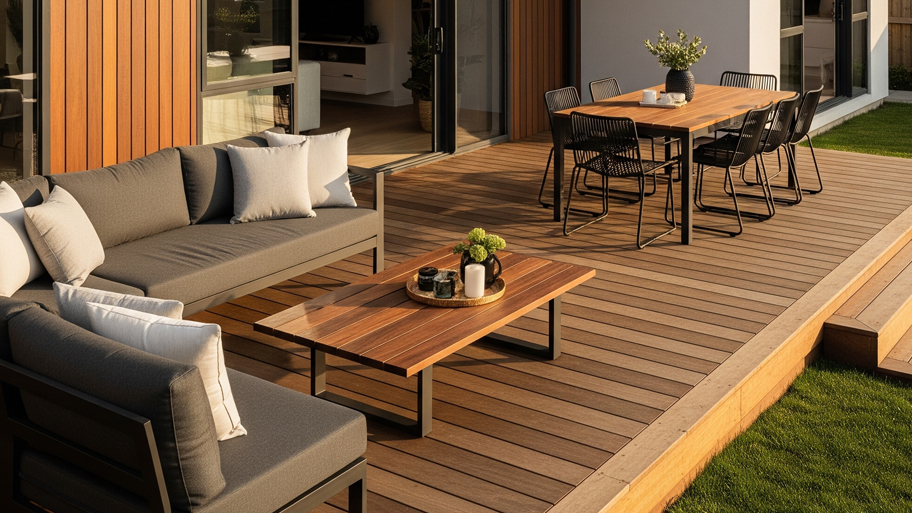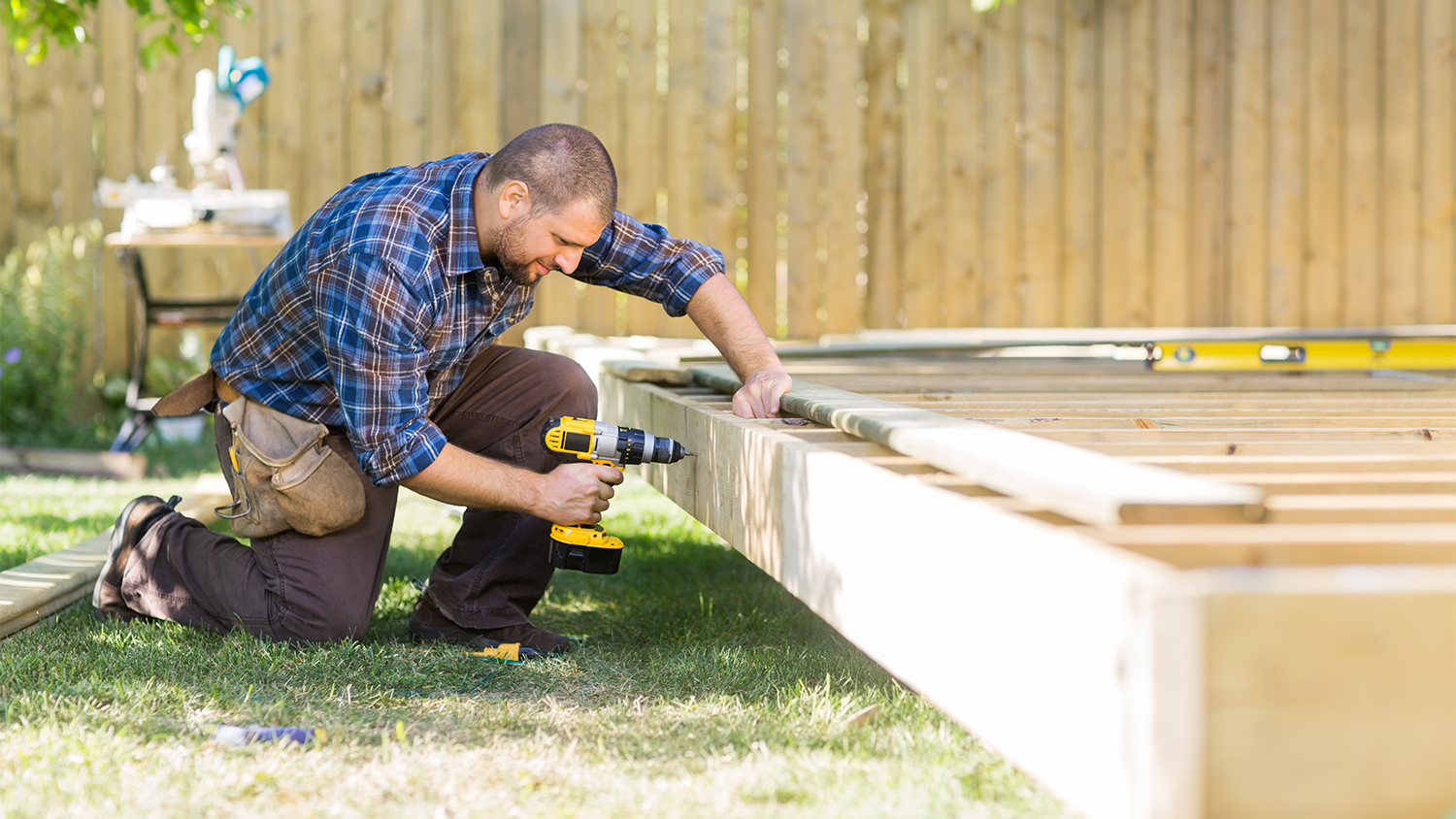
Cedar is a popular decking material, best known for its natural wooden look and resistance to rot. So, how much does a cedar deck cost? Find out in this guide.
The cost of Ipe wood decking often ranges from $14,000 to $22,000 per square foot, with an average of $18,000 per square foot. With a threat of endangerment, Ipe is more costly than other decking options.


Ipe decking costs between $50 and $80 per square foot for labor and materials.
The price is largely determined by deck size and shape, site preparation, foundation installation, and local labor rates.
Additional features, such as railings and stairs, will increase your final bill.
Ipe decking is hard, dense, and heavy, so hiring a professional is the best choice.
Ipe wood decking costs $18,000 on average and often ranges from $14,000 to $22,000. Total installation costs for Ipe wood decking span between $50 and $80 per square foot when considering the combined price of materials and labor. Many factors come into play when considering Ipe wood decking for your project, from deck size to site preparation.
There's more to installing Ipe decking than laying the boards, and many different factors can affect your final bill. Connect with a local deck builder near you to get a specific quote for your backyard project.
In November 2024, three genera in the Ipe family (Handroanthus, Roseodendron, and Tabebuia) were added to the CITES Appendices of species with a threat of endangerment. Trade of Ipe is now more strictly regulated with increased pricing.
Ipe decking is wonderfully warm, as it holds some of the sun’s heat, and it’s also soft on your bare feet. That being said, this decking material is time-consuming and requires special equipment to install. Here’s how deck size affects the cost of Ipe wood decking:
| Deck Dimensions | Ipe Wood Decking Cost, Materials Only | Ipe Wood Decking Cost, Materials Plus Labor |
|---|---|---|
| 10x10 | $1,000–$2,500 | $5,000–$8,000 |
| 12x12 | $1,400–$3,600 | $7,200–$11,500 |
| 14x14 | $2,000–$4,900 | $9,800–$15,700 |
| 14x16 | $2,300–$5,600 | $11,200–$18,000 |
| 12x20 | $2,400–$6,000 | $12,000–$19,200 |
| 16x16 | $2,600–$6,400 | $12,800–$20,500 |
| 14x20 | $2,800–$7,000 | $14,000–$22,400 |
| 16x18 | $2,900–$7,200 | $14,400–$23,100 |
| 15x20 | $3,000–$7,500 | $15,000–$24,000 |
| 20x20 | $4,000–$10,000 | $20,000–$32,000 |
Ipe wood prices are higher than many other types of decking, with an average installed cost of $50 to $80 per square foot. And it’s no surprise that the bigger the deck you are building, the more wood you need and the more labor time it requires. For instance, a small 10’x10’ Ipe deck averages between $5,000 and $8,000, whereas a standard 12’x20’ Ipe deck ranges from $12,000 to $19,200.
Another factor that impacts Ipe decking costs is the shape. If you’re on a tight budget, opt for standard shapes like a rectangle or square because you won’t pay additional labor fees to make unique angles or curves. If the sky is the limit with your budget, you have more flexibility in building an Ipe wood raised or multi-layered deck.
Unless one already exists, your deck will need a foundation for safety and deck stability. Expect to pay $5 to $15 per square foot of surface area. The price of the foundation depends on whether it only involves pouring concrete or if it also needs a wooden substructure.
Preparing the site of your new Ipe wood deck may take some considerable time or no time at all, depending on the current circumstances. If you have an existing deck that needs to be torn down first, you’ll likely incur additional labor costs (it’s best to speak to your decking pro to learn how much extra the demolition will be). Also, if your land needs to be leveled before building your Ipe deck, you’ll spend about $2,200 as an average cost to regrade your yard.
Labor represents around 15% to 25% of the total project cost, with professional deck contractors charging $15 to $35 per square foot. Labor costs largely depend on the difficulty of working with your chosen material and any accessibility concerns. For instance, building on a slope will be tougher than on a flat surface. The same goes for second-story decks versus ground-level decks.
Ipe decking cost is also influenced by location. This material requires specialized tools and expertise to install, and if you live in a region with a higher cost of living, you’ll likely see higher labor rates.
What’s more, Ipe wood comes from Central and South America, so you might need to factor in shipping and transportation costs. Living in a remote location can be a downside in this case.
Since Ipe wood is now threatened for endangerment, you may wish to look at alternative decking materials. Here’s how other options compare.
| Deck Material | Average Cost Range | Pros | Cons |
|---|---|---|---|
| Ipe | $14,000–$22,000 | Highly durable and long-lasting; requires little maintenance; resists rot, insects, and moisture | International trade is regulated, which comes with higher costs, less availability, and ethical concerns |
| Cedar | $3,600–$9,000 | Relatively affordable; resists rot and insects; classic wood look; easy to install | Needs regular maintenance; less durable than other options; scratches easily |
| Pressure-Treated Wood | $4,000–$12,000 | Accessible for homeowners; can be customized; easy to work with | Shorter lifespan than Ipe and composite decking contains chemicals; requires more maintenance |
| Composite | $5,400–$11,500 | Lasts a long time; available in a wide range of colors and styles | Might be more costly than wood decking; may look artificial |
Cedar decking is more budget-friendly and easier to install than Ipe. While Ipe is highly durable and more resistant to rot, insects, and moisture, it’s an endangered species, which increases cost, lowers availability, and raises ethical concerns. Cedar still resists insect and rot damage, plus it is more sustainable and readily available with no wait time.
Ipe will last longer than pressure-treated wood decking, but it’s also more expensive. Pressure-treated wood isn’t cheap either, but it’s much more accessible for homeowners to purchase. However, pressure-treated wood requires more maintenance, including regular cleaning, staining, and resealing.
Ipe is more expensive than composite decking, though it’s slightly more durable. Both materials, however, can last for a long time. To that end, Ipe requires a bit more maintenance than composite. Ipe is also generally considered to be the better-looking material, but composite is available in a wide range of colors and styles.

Some other features are necessary to complete the space, and they’re often not included in the average cost of Ipe decking.
Installing or replacing exterior railings, including labor and materials, costs an average of $925. Railings add to the aesthetic of your new deck, and they also improve safety for kids and pets. You can also upgrade to glass or cable railings, which cost $150 to $250 per linear foot for cable and $200 to $450 per linear foot for glass.
Building deck stairs costs $15 to $25 per square foot, including labor and materials. Your project cost depends on the design complexity, height, and number of stairs. Keep in mind that stairs are an essential component for raised, multi-level decks, so it’s a non-starter expense for some homeowners.
Budget $1 to $2.50 per square foot to coat your Ipe deck with a protectant. This dark hardwood doesn’t need standard staining or sealing because of its density, meaning stains don’t change the color the way they would on lighter wood. However, coating with a UV protectant stops the wood from fading in the sun.
You might want to run power to your new Ipe deck to hang atmospheric fairy lights or install outdoor speakers. The cost to install an outdoor electrical outlet averages around $225.
Due to its density and ability to fight rot and bugs, Ipe wood is a naturally low-maintenance decking material. Homeowners can oil it annually to keep up the rich brown tone, or they can leave it alone for a weathered silver-gray appearance.
The oil costs about $60 to $90 per gallon. If you hire professionals to oil the deck, it’ll cost about $2.50 to $5.50 per square foot.

Even though you could save yourself up to $45 per square foot in labor costs by installing Ipe wood decking yourself, it's better to hire a local deck builder. A professional will install your deck safely and efficiently while you relax and start planning the barbecues you’ll have in your new outdoor space.
Even if you’ve worked on a deck project before, you need to think twice before attempting this installation as a DIY project. Installing Ipe wood decking isn't as easy as working with other woods. Ipe is hard, dense, and heavy, requiring specialty drill bits and saw blades. Plus, you may have to excavate and level the area where you’ll put the deck, and then potentially pour a concrete foundation.
Ipe isn’t the most budget-friendly material, so don’t expect to cut your project costs in half with one magical tip. However, there are a few ways to save if you’re trying to get the most bang for your buck.
Choose a classic shape, like a square or rectangle, for your deck. A simple deck shape means lower labor costs.
Get more than one quote from contractors, and don’t just choose the cheapest quote. Some contractors may offer deals on materials, better warranties, or savings on different parts of the project. Look at pro quotes as a whole rather than just focusing on the price.
Order your Ipe wood decking in bulk during the fall or winter when prices are lower. You’ll cut costs due to seasonality and may even save by buying in bulk.
Home is the most important place on earth, which is why Angi has helped more than 150 million homeowners transform their houses into homes they adore. To help homeowners with their next project, Angi provides readers with the most accurate cost data and upholds strict editorial standards. We extensively research project costs to develop the pricing data you see, so you can make the best decisions for you and your home. We rely on reputable sources, including the U.S. Bureau of Labor Statistics, academic journals, market studies, and interviews with industry experts—all to ensure our prices reflect real-world projects.
Want to help us improve our cost data? Send us a recent project quote to [email protected]. Quotes and personal information will not be shared publicly.
From average costs to expert advice, get all the answers you need to get your job done.

Cedar is a popular decking material, best known for its natural wooden look and resistance to rot. So, how much does a cedar deck cost? Find out in this guide.

Vinyl is a durable and relatively inexpensive choice of decking material. Your vinyl deck cost will depend on labor, the deck size, and more.

Are your porch columns old or simply unsightly? It might be time to refresh them. Here's a breakdown of the cost of replacing porch columns.

Deck board replacement can keep your outdoor space looking good and safe to use. Learn how to replace deck boards yourself.

Outdoor living structures such as porches, stoops, decks, and patios are all common ways to make your house stand out. Here’s the difference between the four types of structures and what to consider when building one for your home.

Discover floating deck cost estimates, including average prices, installation factors, and ways to save. Learn what impacts your floating deck cost.